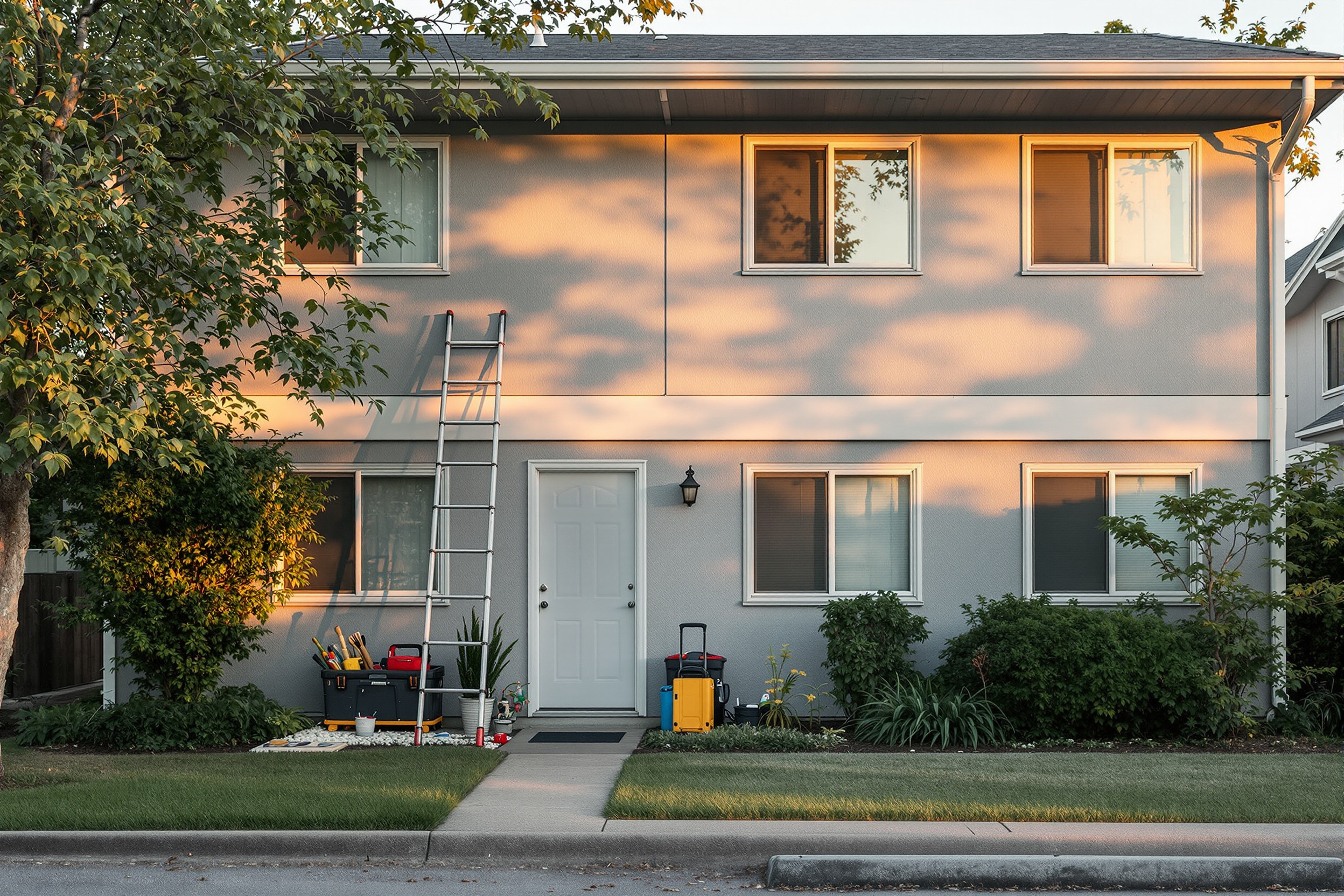House flipping comes with risks. While popular fixer-upper shows have made the process look quick and easy, the truth is there are plenty of things that can go wrong.
During construction, your property will be more vulnerable to perils like water damage or fires caused by electrical wiring that’s been exposed. Sometimes the property may stay on the market longer than anticipated, exposing your investment to vandalism and theft as it sits vacant. For these reasons and more, if you’re considering flipping a house, you need the right insurance coverage to protect your project.
This article will guide you through insurance policies for flipped homes. You’ll learn what house flipping insurance is, what it covers, and how to determine how much coverage you’ll need for your house rehab project.
What Is House Flipping Insurance and Why Do You Need It?
Homeowners insurance and landlord policies cover a primary residence or rental property, but house flipping insurance provides coverage outside these traditional forms of protection.
More specifically, house flipping insurance is designed to cover fixer-upper houses. These can be run-down properties, houses needing a facelift, or homes in distress that require significant renovations so investors can buy and sell them at a profit once repairs are complete.
Since these homes are typically empty for lengthy periods—whether during renovations or waiting to be rented or sold—the possibility of potential losses increases. Burglars may target appliances, copper wiring, electronics, tools, and other valuables in a vacant house. Vandals can also cause damage to the home by breaking windows and spray-painting graffiti.
House flipping insurance offers coverage for these types of risks, so you don’t suffer financial losses if they occur on your property. It is intended to provide you and your house the protection you need to get peace of mind as you concentrate on the most important thing—making a fast flip.
Types of Insurance Coverage for Fix-and-Flips
The ideal insurance policy for your project will depend on its unique situation, including whether you are performing a major structural renovation or a simple facelift, where the property is located, and whether you’re using contractors to complete construction. With that said, there are four critical types of coverage to consider.
Dwelling Policy
A dwelling policy insures physical and direct damages on an empty house undergoing minor repairs in the event of a covered loss. During light cosmetic renovations, the property is at an increased risk because the same safety measures may not be in place compared to an occupied home.
For example, the risk of fire hazards can increase due to exposed wiring or gas lines. Water damage could occur due to the partial removal of pipes. Roof replacement can expose your home to greater risks during storms.
When making a significant change to your home, a dwelling policy can help protect your property from these risks. But don’t forget, to ensure your home is best protected during and after any upgrades, you must inform your agent of ongoing renovations, so they can assign the correct values to your coverage and alert you to any exclusions.
Builders Risk Policy
Builders risk insurance often provides coverage for damages that can occur during the construction process, such as damages to materials, supplies, and equipment used for your house flip project.
This coverage may also protect against theft, vandalism, and natural disasters like hail and windstorms. It is additionally intended to provide coverage for legal expenses if someone is injured on the property while your house flip project is underway.
However, these policies typically don't cover damages caused by defects in design or construction or employee theft. For those events, you will need to look into additional coverage options such as errors and omissions insurance or professional liability insurance.
Vacant Home Insurance
Vacant home insurance is essential when your house is left unoccupied for an extended period due to a property flipping project. A standard landlord policy generally doesn't provide coverage against common risks associated with vacant properties, such as vandalism, theft, fire, or water damage.
Insurance for a vacant home will cover the same perils covered under landlord insurance. The exact length of coverage may differ depending on your provider but typically ranges from three to twelve months.
It's important to understand that leaving your house unprotected puts it at risk of minor damages and more serious issues, so investing in the right vacant home insurance coverage is crucial.
Liability Policy
Construction sites are rife with accidents and injuries, sometimes severe and fatal. According to the U.S. Bureau of Labor Statistics, deaths on job sites represent over 20% of the total workplace fatalities.
These occurrences could lead to liability lawsuits for a home flipper, resulting in significant legal fees and medical costs.
A liability policy can help protect you from these losses. It is intended to cover legal fees, medical costs, and other damages if an uninsured third party is injured or an accident becomes fatal on your property during the construction or renovations.
However, this policy does not cover workers or general contractors hired at the site who have their own insurance coverage.

How to Determine the Amount of Insurance Needed for a Flip
Since insurance policies don’t come in a one-size-fits-all format, take the time to consider your unique situation before purchasing home flipping insurance. Doing so helps ensure you aren’t under- or over-insured.
One of the best ways to determine the cost of home flipping insurance is to consider the type of policy to choose. Generally, there are two types of policies to choose from: basic and special form coverage.
Basic Form
A basic form policy covers your property against all the listed perils. However, if a peril isn’t listed in your policy, your insurer does not reimburse you for the loss. Some standard exclusions often include theft, vandalism, and water damage.
Although the basic form policy is usually the most affordable option, consider the financial setbacks you could face due to potential damages from these exclusions.
Special Form
A special form policy covers all perils other than those that your insurer specifically excludes. The most common exclusions to be aware of include water backup, flood, and earthquake.
Despite being costlier than the basic form, a special form policy will provide more comprehensive coverage for your home.
In addition to deciding between these two options, you must also consider the location and value of your investment property. Why? Because both of these factors can impact the cost of your policy.
Insurance companies will look at the levels of risk associated with your property's location and the value of its construction materials and fixtures. The greater the risk and the higher the property value, the more you can expect to pay for house flipping insurance.
Next Step: Get an Instant Quote for House Flipping Insurance
An online insurance provider like Obie is an ideal place to get an instant quote for house flipping insurance. With Obie, there are no hoops to jump through and no complicated paperwork to fill out to get your quote. Simply enter your property address, review the quote you receive, and then purchase the coverage.
With $10 billion in total insured property across 50 states, you can trust your home will be in good hands with Obie. Take advantage of industry-leading rates and get an instant house flipping insurance quote from Obie today.







